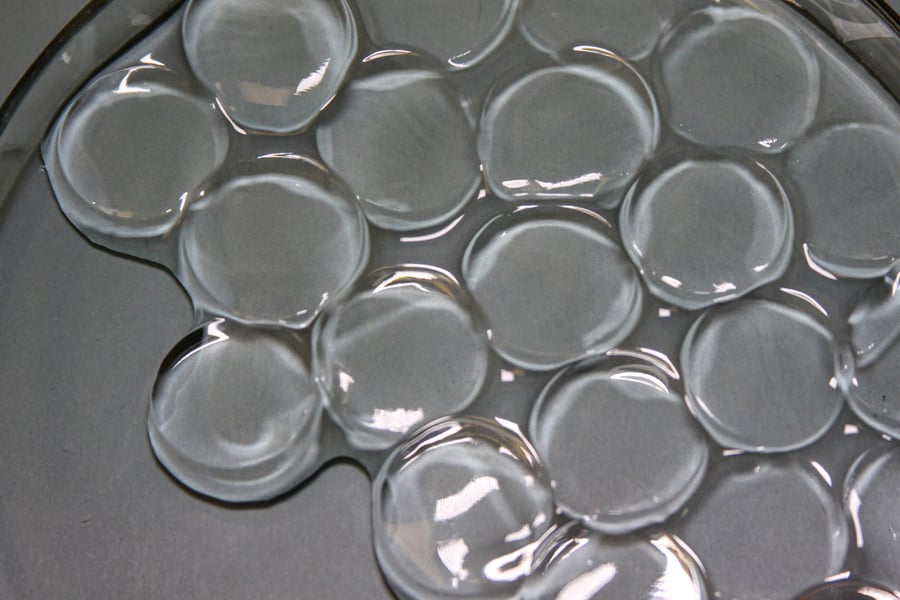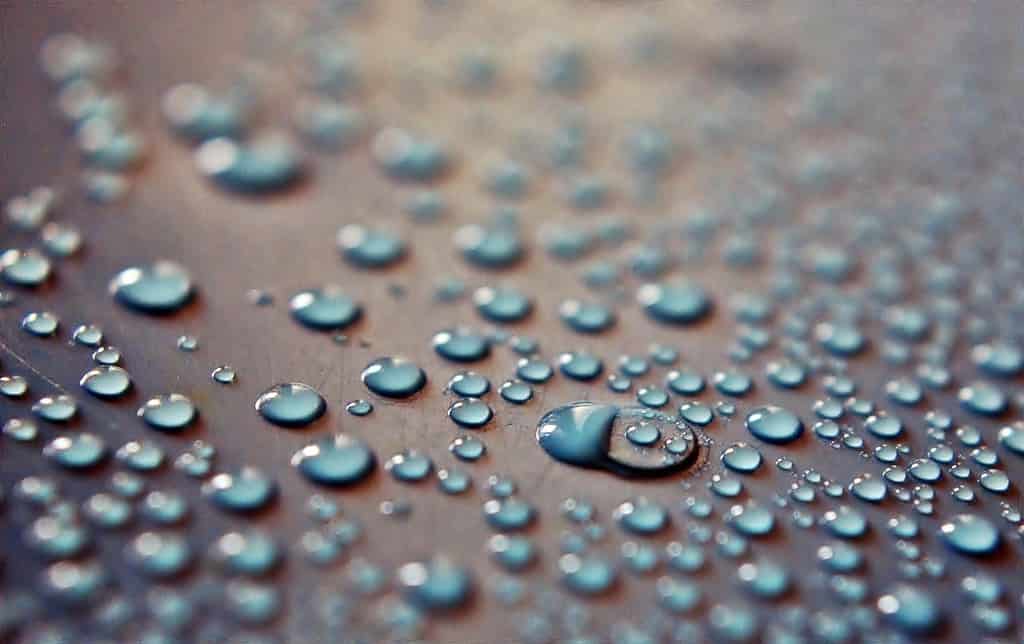Researchers are actively developing materials with the aim of addressing the global challenges related to energy and water. Looking for options that can take water from the air, a team at MIT has now zeroed in on hydrogels. These are stretchy gels made that include a polymer that has been used for years in diapers.

In a new study, the MIT engineers synthesized a transparent and rubbery material made of hydrogel – enhancing its absorbency by infusing it with lithium chloride (a type of salt). The material can expand and take on more moisture as it absorbs water vapor. Even in extremely dry conditions, it can effectively extract vapor from the air.
The researchers could incorporate a higher concentration of salt into the hydrogel compared to previous studies. As a result, they noticed that the salt-infused gel displayed a record capacity to absorb and retain moisture across various humidity levels, including very arid conditions that have proven challenging for other materials.
If produced rapidly and on a large scale, this superabsorbent gel holds great potential as a passive water harvester, particularly in desert and drought-prone regions. The material’s ability to continuously absorb vapor, which can then be condensed into drinkable water, could provide a sustainable solution for water scarcity, the team said.
“We’ve been application-agnostic, in the sense that we mostly focus on the fundamental properties of the material,” Carlos Díaz-Marin, study author, said in a statement. “But now we are exploring widely different problems like how to make air conditioning more efficient and how you can harvest water. This material has so much potential.”
The role of hydrogels
Marin and his team did a literature review and found previous studies exploring the combination of hydrogels with different salts. Among these salts, certain types, like the rock salt used for ice melting, had exceptional efficiency in absorbing moisture, including water vapor. Notably, lithium chloride emerged as the most outstanding salt.
This is because of its capability of absorbing more than 10 times its own weight in moisture. When left in an unstructured state, lithium chloride alone could attract vapor from the surrounding air, the researchers said. Unfortunately, the absorbed water would merely accumulate around the salt without any mechanism for retention.
That’s why they infused the salt into a hydrogel, creating a material that could hold in the moisture and swell to accommodate more water. Gustav Graeber, study author, said it’s the best of both worlds. “The hydrogel can store a lot of water, and the salt can capture a lot of vapor,” Graeber from Humboldt University said in a statement.
However, the MIT team found that previous studies reached a limit to the amount of salt they could put on the gels. The best-performing samples were hydrogels infused with four to six grams of salt per gram of polymer. These absorbed 1.5 grams of vapor per gram of material in dry conditions of 30% relative humidity, they explained.
Previous studies had tried to synthesize samples by soaking hydrogels in salty water and waiting for the salt to infuse the gels. However, the experiments ended after one or two days, as the researchers found the process too slow, without much salt absorbed into the gels. The samples were also incapable of absorbing much water vapor.
Overcoming limitations

To explore the possibility of further salt absorption with extended synthesis time, the team did experiments using polyacrylamide, a hydrogel, and lithium chloride. They synthesized hydrogel tubes using conventional mixing techniques. These tubes were then sliced into thin disks, and each disk was immersed in a solution of lithium chloride with varying salt concentrations.
On a daily basis, the researchers removed the disks from the solution, measured their weight, and determined the amount of salt that had infused into the hydrogels. The disks were then returned to their respective solutions to continue the synthesis process. This approach allowed the team to track the cumulative salt absorption over time.
Ultimately, the researchers discovered that with an increased duration of synthesis, hydrogels were indeed capable of absorbing more salt. After immersing the hydrogels in a saline solution for 30 days, they successfully incorporated up to 24 grams of salt per gram of polymer, surpassing the previous record of six grams.
The team subjected various samples of these salt-laden hydrogels to absorption tests under different humidity conditions. Remarkably, the samples exhibited the ability to expand and absorb higher quantities of moisture across all humidity levels without any leakage. The gels captured 1.79 grams of water per gram of material under 30% of humidity.
“The big, unexpected surprise was that, with such a simple approach, we were able to get the highest vapor uptake reported to date,” Graeber said. “Now, the main focus will be kinetics and how quickly we can get the material to uptake water. That will allow you to cycle this material very quickly, so that instead of recovering water once a day, you could harvest water maybe 24 times a day.”
The study was published in the journal Advanced Materials.









